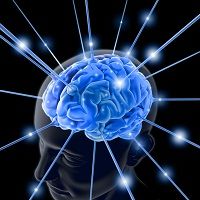Woman Feels Pain for the First Time in Her Life
A rare genetic mutation leaves some individuals with the inability to feel pain. Previous attempts to turn that understanding into an analgesic have been unsuccessful, but a new approach has proven effective.

A rare genetic mutation leaves some individuals with the inability to feel pain. Previous attempts to turn that understanding into an analgesic have been unsuccessful, but a new approach has proven effective.
Researchers from the University College London (UCL) believe that they have found a gene that is at least partly responsible for pain, and therefore, were able to stop and cause pain. A previous study in 2006 discovered that the sodium channel, Nav1.7, is an important part of signaling pain. It went on to describe that those who do not feel pain have a non-functioning Nav1.7. The UCL team used mice that were genetically modified to not feel pain to explore this phenomenon further.
When the researchers gave the mice naloxone, an opioid blocker, they were able to feel pain. They tested the same theory in a 39-year-old woman who also had the genetic mutation. When she took naloxone, something extraordinary happened — she felt pain for the first time in her life.
- The MD Magazine Pain Management specialty page
“After a decade of rather disappointing drug trials, we now have confirmation that Nav1.7 really is a key element in human pain,” senior author John Wood, FMedSci, FRS, said in a news release.
Broad-spectrum sodium channel blockers can be found in local anesthetics, but the authors explained that they can’t be used for long-term pain management because they cause complete numbness and additional serious side effects can take place over time. People without a functioning Nav1.7, don’t experience complete numbness. They still feel normal touch and the only other side effect of the condition is the inability to smell.
“The secret ingredient turned out to be good old-fashioned opioid peptides, and we have now filed a patent for combing low dose opioids with Nav1.7 blockers,” explained Wood, a professor at UCL Medicine. “This should replicate the painlessness experienced by people with rare mutations, and we have already successfully tested this approach in unmodified mice.”
It’s no secret that people using opioids run the risk of becoming dependent on the drugs. According to the report published in Nature Communications, when used in combination with Nav1.7 blockers, only a low dose of opioids is needed to prevent pain.
We hope to see our approach tested in human trials by 2017 and we can then start looking into drug combinations to help the millions of chronic pain patients around the world,” Wood concluded.
What to Read Next >>> ‘Pain Gene’ Identified Through Those Who Can’t Feel Physical Pain